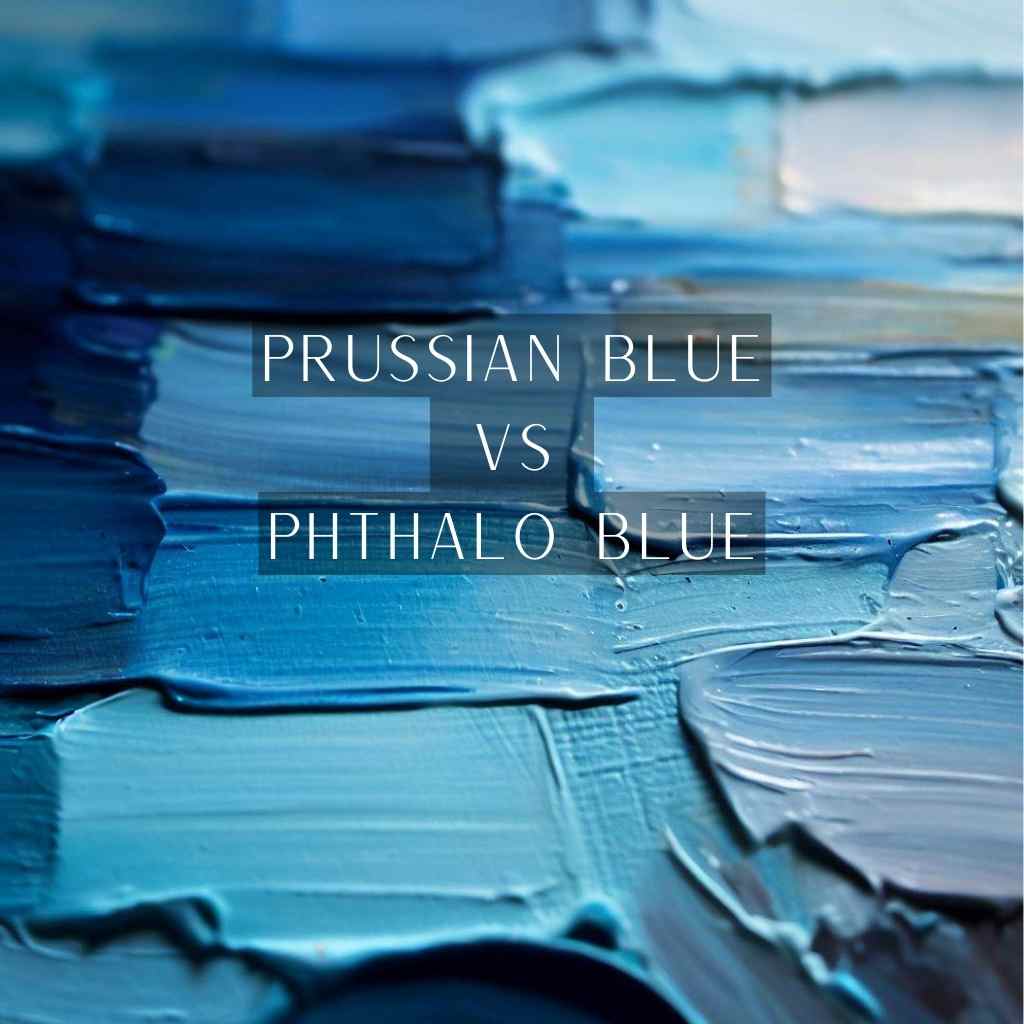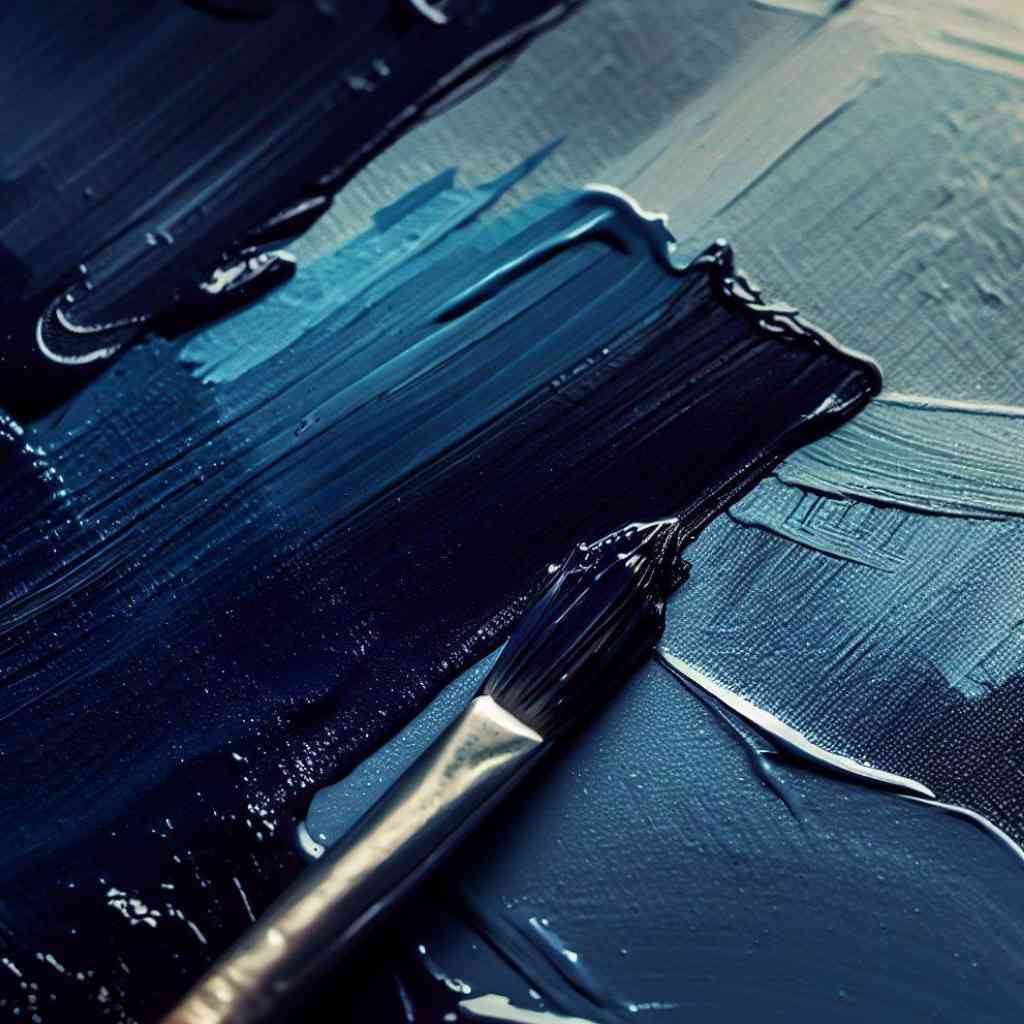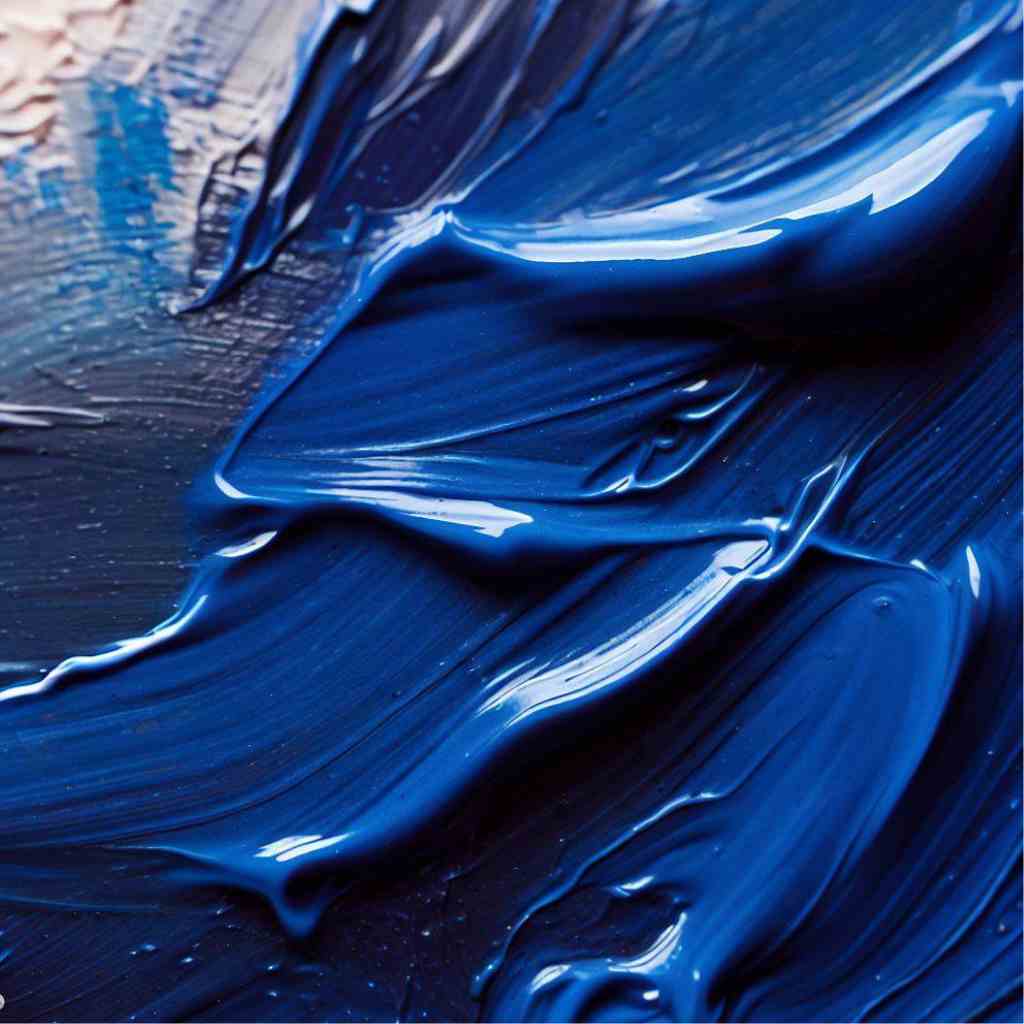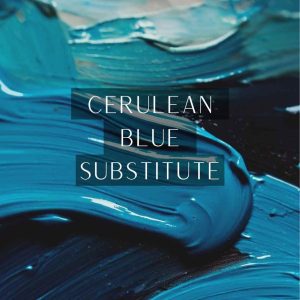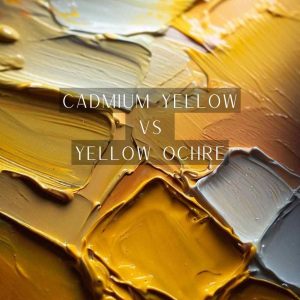In the mesmerizing realm of art, where every stroke is a whisper of creativity and every hue a conduit of emotion, two names stand as luminous protagonists: Prussian Blue and Phthalo Blue.
As artists and enthusiasts alike delve into the captivating world of pigments, an intriguing enigma unfolds. The canvas becomes a stage where depth battles vibrancy, where tradition embraces innovation, and where the quest for the perfect blue finds its embodiment.
Join us as we embark on a journey to decipher the nuances of prussian blue vs phthalo blue, unveiling their stories, unraveling their mysteries, and empowering your palette with the magic of timeless and modern blues.
What is Prussian Blue
Prussian Blue, steeped in history, was discovered in the early 18th century by accident. A Berlin color-maker stumbled upon its rich hue while experimenting with substances containing iron and cyanide.
This chance discovery marked the birth of a pigment that would adorn the works of iconic artists like Goya and Van Gogh.
The alchemical dance of iron, cyanide, and heat gives birth to Prussian Blue’s intricate molecular structure. Its scientific name, ferrous-ferric ferrocyanide, hints at the complexity that lies beneath its beguiling exterior. This compound’s composition contributes to Prussian Blue’s unique properties and applications.
What is Phthalo Blue
In the mid-20th century, the art world welcomed a newcomer: Phthalo Blue. Derived from phthalocyanine compounds, this pigment brought with it the brilliance and intensity that modern artists craved.
Its entry into the artistic scene marked a shift towards bolder expressions and vivid interpretations.
Phthalo Blue’s scientific genesis lies in phthalocyanine, a complex organic compound that dances with copper atoms. This unique structure accounts for the pigment’s astonishing vibrancy.
Variants like Phthalo Green and Phthalo Turquoise expand the color’s range, offering artists a spectrum of possibilities.
Comparing Prussian and Phthalo Blues
Within the vast spectrum of blues, two pigments, Prussian Blue and Phthalo Blue, stand out as distinctive and captivating choices.
Here are the intricacies and unique qualities that define these two remarkable blue pigments-
Pigment Properties
At the heart of Prussian Blue’s allure lies its intricate composition. A product of iron and cyanide, this compound boasts a complex molecular structure that contributes to its distinct characteristics. The interplay between these elements imbues Prussian Blue with a balance between transparency and opacity.
On the other hand, Phthalo Blue derives its captivating intensity from phthalocyanine compounds. These compounds create a vibrant and vivid blue hue that can captivate the eye with its brightness.
This difference in composition influences how these pigments behave on the canvas, interact with light, and respond to various mixing techniques.
Color Spectrum: Range and Intensity of Blues
Within the world of blue pigments, there exists a captivating spectrum that ranges from the deep, historical richness of Prussian Blue to the contemporary vivacity of Phthalo Blue. Prussian Blue, with its roots in history, offers a regal and almost mysterious depth. It evokes a sense of nostalgia, harkening back to classical artworks.
In contrast, Phthalo Blue bursts forth with an electrifying intensity that demands attention. Its bold and modern character adds an energetic flair to any composition.
By skillfully juxtaposing these two distinct blues, artists can create dynamic works that play with the emotional spectrum blue has to offer.
Mixing and Blending
When it comes to mixing and blending, Prussian Blue and Phthalo Blue offer unique contributions. Prussian Blue, with its versatility, becomes an invaluable tool for creating shadows and depth within a composition. Its ability to seamlessly integrate with other pigments adds a layer of complexity to the color palette.
Phthalo Blue, with its vibrant nature, brings unparalleled brilliance to mixtures. Even when diluted, it retains its luminosity, contributing its vivid character to any blend. Understanding the dynamics of these interactions empowers artists to craft harmonious compositions that resonate with their artistic vision.
Lightfastness and Stability
Prussian Blue and Phthalo Blue offer varying degrees of lightfastness and stability, affecting their ability to retain their color vibrancy over time. Prussian Blue, due to its composition and historical use, demonstrates a moderate level of lightfastness.
Phthalo Blue, on the other hand, is known for its excellent lightfastness, making it a reliable choice for artworks that are meant to endure.
Prussian Blue and Phthalo Blue: Artistic Application
Art is a language that transcends words, and within its vibrant vocabulary, the hues of blue emerge as potent storytellers.
Among the array of blues, Prussian Blue and Phthalo Blue step into the spotlight, each with its unique ability to convey emotions, capture landscapes, and weave narratives.
Here is how these two pigments lend themselves to the art of expression-
- Mood and Emotion: In the world of art, colors are synonymous with emotions. Prussian Blue, with its depth and richness, has an innate ability to evoke introspection and melancholy. It casts a serene ambiance, enveloping the canvas with a sense of tranquility.
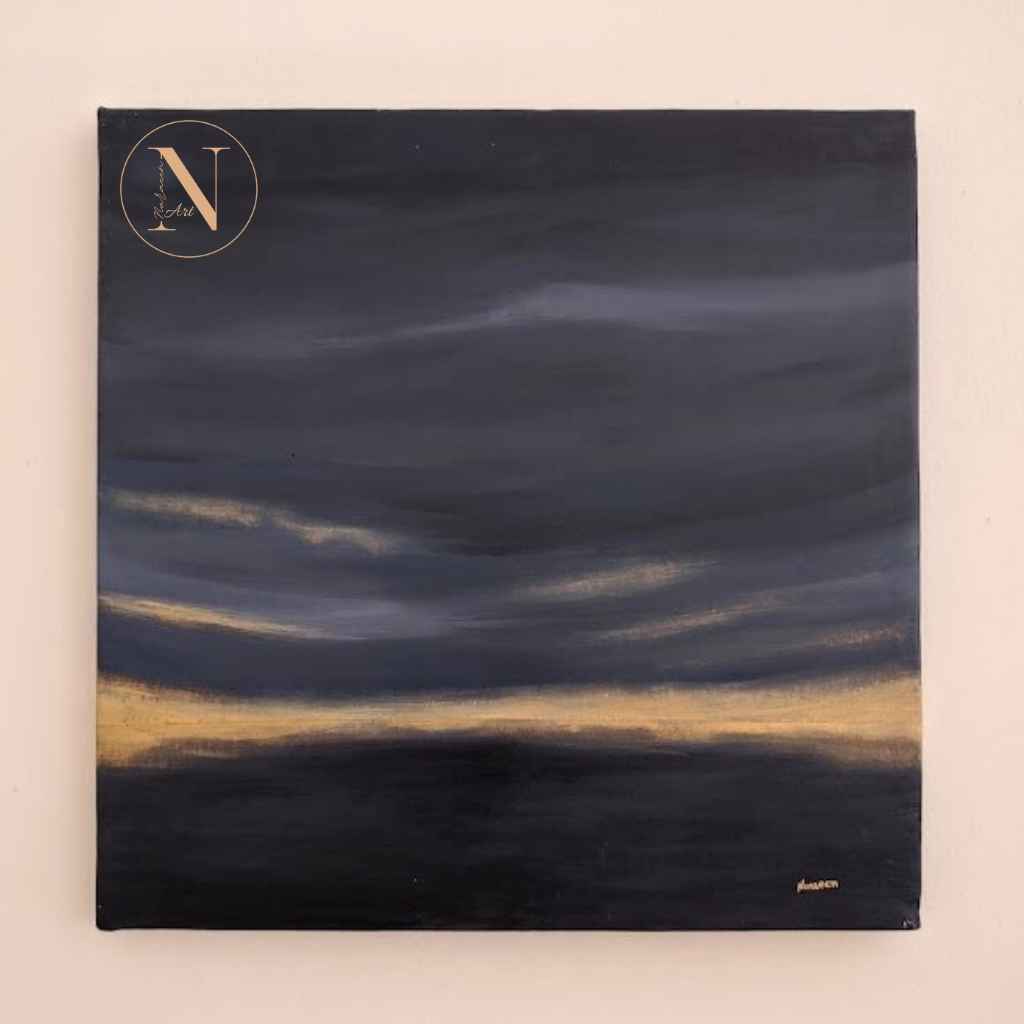
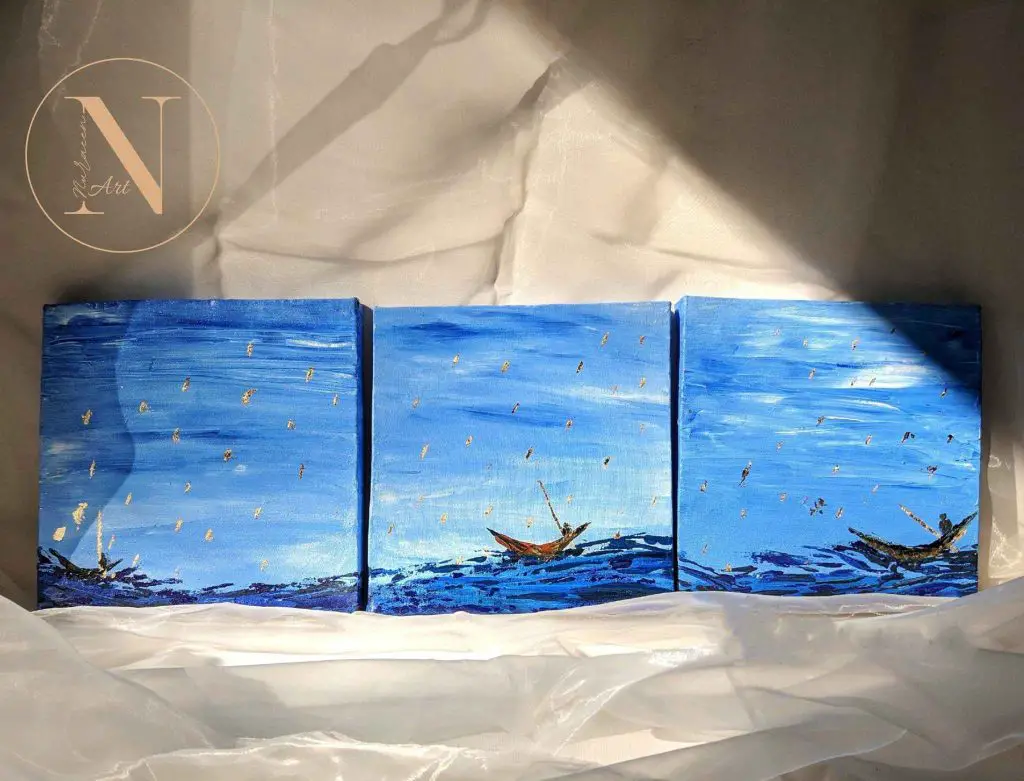
On the other hand, Phthalo Blue bursts forth with a vibrant energy that speaks of vitality and optimism. Its bright presence infuses the artwork with an invigorating mood, painting the canvas with a sense of positivity.
- Landscape Magic: Nature’s beauty finds its expression in the captivating blues of Prussian Blue and Phthalo Blue. Prussian Blue, with its historical resonance, is an adept storyteller of expansive skies and deep waters.
It captures the serenity of calm seas and the expanse of open skies, inviting viewers to lose themselves in the vastness.
Phthalo Blue, on the other hand, excels in portraying the vibrant blues of tropical waters and lively skies. Its intensity brings alive the movement and vitality of nature’s elements, adding a dynamic touch to landscapes.
- Portraying Depth: The allure of Prussian Blue and Phthalo Blue extends beyond surface appearances; it delves into the realm of spatial illusions.
Prussian Blue’s subtlety allows it to play the role of receding backgrounds, creating an illusion of depth. It transforms two-dimensional canvases into windows that open onto multidimensional scenes.
Phthalo Blue, with its intensity, can illuminate foreground elements, adding layers that trick the eye into perceiving depth where there is none. This interplay of depth and dimension elevates the artistic experience.
- Cultural and Symbolic Significance: Prussian Blue, with its historical roots, often symbolizes wisdom, depth, and introspection. It has a timeless quality that lends itself to classic narratives.
Phthalo Blue, with its modern brilliance, often signifies innovation, energy, and change. Its vibrant character aligns with contemporary narratives that explore the dynamics of a rapidly evolving world.
Conclusion
As we draw the final strokes on our canvas of exploration, the vivid tapestry of prussian blue and phthalo blue unfurls before us, showcasing the breathtaking diversity of the artistic realm.
We embarked on this journey seeking a solution to the enigma of these two remarkable pigments, and what we discovered was an intricate dance between tradition and innovation, a harmonious blend of depth and vibrancy that has left us spellbound.
With each brushstroke, each layer of color, the problem of choosing between these blues transforms into an opportunity for artistic brilliance.
As we bid adieu to this exploration, let your artistic journey be guided by the kaleidoscope of blues that is prussian blue vs phthalo blue, a testament to the ever-evolving world of artistry.

